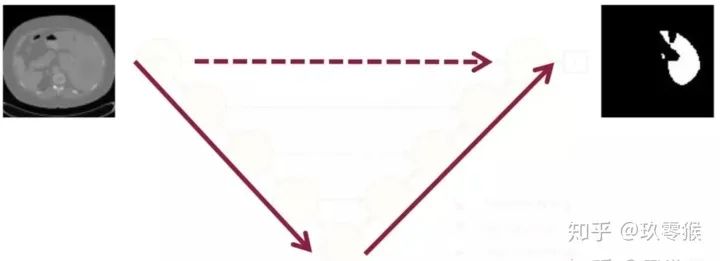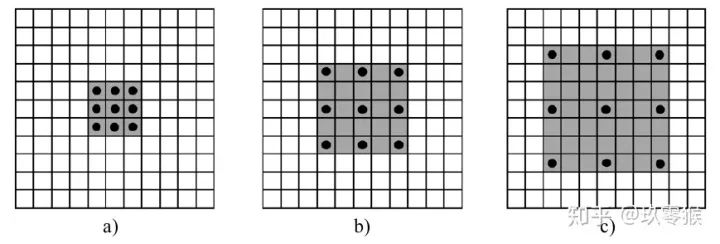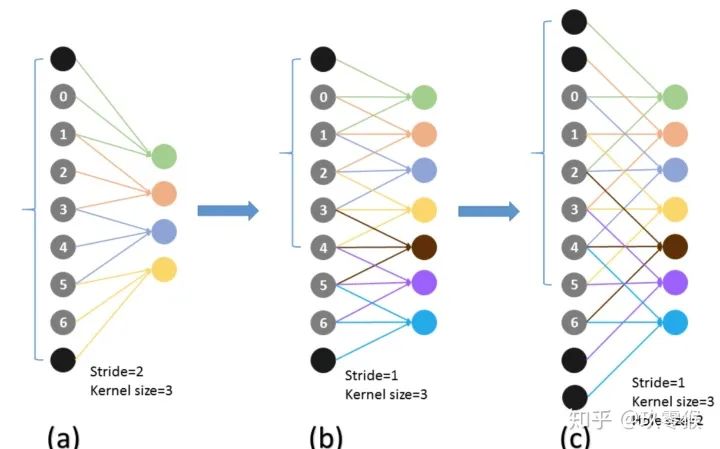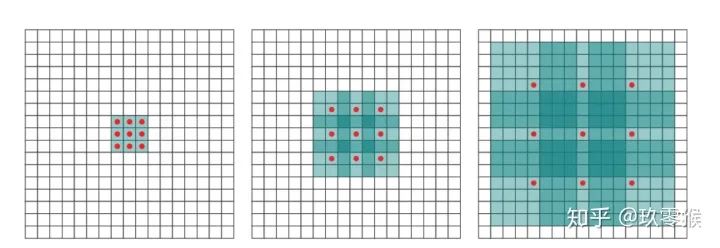一文读懂空洞卷积(Dilated Convolutions)
点击左上方蓝字关注我们

转载自 | 极市平台
一、空洞卷积的提出

二、空洞卷积的原理
 卷积为例,展示普通卷积和空洞卷积之间的区别,如图2所示
卷积为例,展示普通卷积和空洞卷积之间的区别,如图2所示
 的卷积核,灰色地带表示卷积后的感受野(后面有相关计算公式,这里都是一层卷积的,直接可以看出来)
的卷积核,灰色地带表示卷积后的感受野(后面有相关计算公式,这里都是一层卷积的,直接可以看出来)a是普通的卷积过程(dilation rate = 1),卷积后的感受野为3 b是dilation rate = 2的空洞卷积,卷积后的感受野为5 c是dilation rate = 3的空洞卷积,卷积后的感受野为8

 ,卷积核的大小
,卷积核的大小  ,填充
,填充  ,步长
,步长  ,计算公式如下:
,计算公式如下:
dense prediction problems such as semantic segmentation ... to increase the performance of dense prediction architectures by aggregating multi-scale contextual information(来自[1])
三、感受野的计算

 的卷积,却可以起到
的卷积,却可以起到  、
、  等卷积的效果,空洞卷积在不增加参数量的前提下(参数量=卷积核大小+偏置),却可以增大感受野,假设空洞卷积的卷积核大小为
等卷积的效果,空洞卷积在不增加参数量的前提下(参数量=卷积核大小+偏置),却可以增大感受野,假设空洞卷积的卷积核大小为  ,空洞数为
,空洞数为  ,则其等效卷积核大小
,则其等效卷积核大小  ,例如
,例如  的卷积核,则
的卷积核,则  ,公式如下(来自[4])
,公式如下(来自[4])
当前层的感受野计算公式如下,其中,
 表示当前层的感受野,
表示当前层的感受野,  表示上一层的感受野,
表示上一层的感受野,  表示卷积核的大小
表示卷积核的大小
 表示之前所有层的步长的乘积(不包括本层),公式如下:
表示之前所有层的步长的乘积(不包括本层),公式如下:









四、潜在的问题及解决方法

Panqu Wang,Pengfei Chen,et al**.Understanding Convolution for Semantic Segmentation.//**WACV 2018 Fisher Yu,et al.Dilated Residual Networks.//CVPR 2017 Zhengyang Wang,et al.**Smoothed Dilated Convolutions for Improved Dense Prediction.//**KDD 2018. Liang-Chieh Chen,et al.Rethinking Atrous Convolution for Semantic Image Segmentation//2017 Sachin Mehta,et al.ESPNet: Efficient Spatial Pyramid of DilatedConvolutions for Semantic Segmentation.//ECCV 2018 Tianyi Wu**,et al.Tree-structured Kronecker Convolutional Networks for Semantic Segmentation.//AAAI2019** Hyojin Park,et al.Concentrated-Comprehensive Convolutionsfor lightweight semantic segmentation.//2018 Efficient Smoothing of Dilated Convolutions for Image Segmentation.//2019
END
整理不易,点赞三连↓
评论
